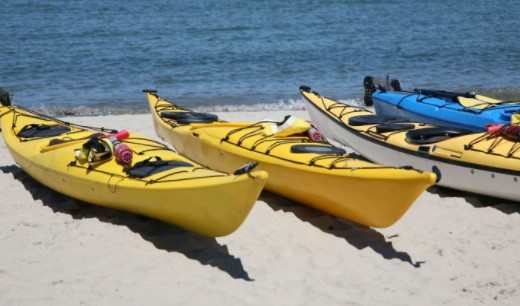There are many types of kayaks available today. There are so several options that it can be challenging to choose the suitable model for you. Here are ten things to contemplate when buying a kayak for fishing.
Consider your physical appearance, your mental health, and your attitude. Next, consider your weight. Your build and physical condition will determine whether or not you purchase a kayak with pedals, a motor, or a paddle to propel it. What are your goals for getting from one fishing spot to another?
Sit-On-Top (SOT), or Sit In-Kayak (SIK). This is your personal choice. A “sit-in” kayak is the traditional kayak. This is where you can sit in the kayak.Sit on top kayaks are made of a tube-like structure that allows water to drain through holes called “scuppers.”My preference for kayak fishing is the SOT. Talk to experts and compare them all. Find out what feels best for you.
Stability: There are two types of strength. The first is stability on the water. This is how stable it is. The second and most important factor of peace is how far a kayak can tip or lean before going overboard. The design of the kayak’s hull is critical.
Maneuverability: You want a kayak that is responsive and can handle well. How well it takes will depend on how much rocker (or camber), the boat’s length and width, as well as the distance from the front to back. It will respond faster if it is more rocker than it does a shorter kayak. However, this can also affect stability. The boat will respond faster and be more seaworthy if it has less rocker.
Weight: You won’t use your kayak as often if it is too heavy to carry around and difficult to get off your vehicle. Portaging around obstacles can drain your energy.
Maximum Weight Capacity: You should also consider your weight and your gear’s weight. The kayak maker will list maximum weight capacities. You can be a barge if you don’t keep to the limits.
Speed of Kayak: This is an individual choice. A shorter, more stable kayak will go slower, while a more comprehensive, a longer kayak will be faster. It can take more energy and time to reach a fishing spot with a wider kayak. This is especially true when you are paddling against strong winds. It can be challenging to fish comfortably from a shorter, narrower kayak that cuts through water and winds. A balance between these two styles is a safe option.
Length: As we have already mentioned, the longer kayak will be seaworthy and faster. It would help if you determined the water conditions that you will be paddling in. For protected waters or rivers, shorter kayaks (under 11 feet) are ideal. Lengthier kayaks (13′-14′) work better in lakes, bays, and oceans.
Comfort/Sitting: This is an important point. You won’t be able to stay out as long as you don’t feel comfortable. You’ll be sitting for long periods, so make sure you choose the right seat. Consider how it sustains your legs and whether it has drainage holes. This can make a big variation in how you feel and whether your experience is pleasant.
Accessorizing a kayak with accessories is not an easy task. Consider what accessories you would like to equip your boat with, and consider whether modifications are possible. Storage for your fishing gear is one thing. Are there storage areas for your fishing gear that are easily accessible from the seat of the car? Are you able to transport a cart? When you are choosing your kayak, it is important to consider storage.
When you’re not using your kayak, it should be stored somewhere. Consider the size of your storage space and how long your kayak is. For transporting your kayak to the water, you will need to have a secure way to attach it to the vehicle. It can be attached to a trailer or rack, but it must still be secure for safe transport.
These are my top 10 considerations when purchasing a kayak to fish from. Although not all of the information is included, it will provide a starting point. Talk to experts. Learn from the experts what other fishermen are using to succeed and what could be done better.
You will have a blast kayak fishing.
These are my two favorite sports! What could be more? Since 1978, I’ve been kayaking ever since I purchased a Klepper 13-year-old kayak. In my first kayaking year, I had already paddled on 43 rivers in 5 states and Canada.
Combining fishing and kayaking creates a peaceful yet invigorating experience. Since that first year, I’ve owned several kayaks and introduced many people to this sport.

